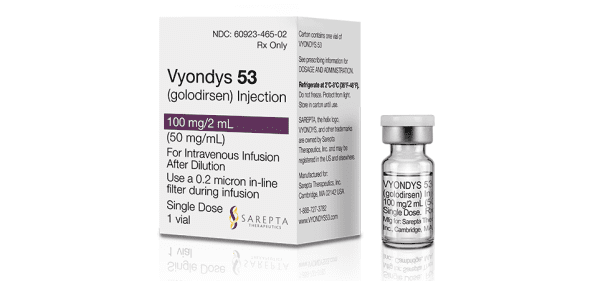Golodirsen Disease Interactions
There are 2 disease interactions with golodirsen.
Antisense oligonucleotides (applies to golodirsen) renal impairment
Moderate Potential Hazard, Moderate plausibility. Applicable conditions: Renal Dysfunction
Renal toxicity has been observed in animals receiving antisense oligonucleotides including golodirsen, casimersen, and viltolarsen. Renal toxicity has not been observed in clinical studies with these agents, but clinical experience is limited, and renal toxicity, including potentially fatal glomerulonephritis, has been observed after administration of some antisense oligonucleotides. Serum cystatin C, urine dipstick, and urine protein-to-creatinine ratio should be measured prior to therapy with urine dipstick repeated monthly and serum cystatin C and UPCR repeated every 3 months during therapy. The glomerular filtration rate may be measured using an exogenous filtration marker prior to therapy. For patients with Duchenne muscular dystrophy (DMD), creatinine may not be a reliable measure of kidney function due to a reduced skeletal muscle mass. If persistent increases in serum cystatin C or proteinuria are detected, the patient should be referred to a nephrologist for further evaluation. Patients with known renal function impairment should be closely monitored during treatment.
Golodirsen (applies to golodirsen) hepatic impairment
Moderate Potential Hazard, Moderate plausibility. Applicable conditions: Liver Disease
Golodirsen has not been studied in patients with hepatic impairment. Caution is advised.
Switch to professional interaction data
Golodirsen drug interactions
There are 5 drug interactions with golodirsen.
More about golodirsen
- golodirsen consumer information
- Check interactions
- Compare alternatives
- Side effects
- Dosage information
- During pregnancy
- Drug class: miscellaneous uncategorized agents
- En español
Related treatment guides
Drug Interaction Classification
| Highly clinically significant. Avoid combinations; the risk of the interaction outweighs the benefit. | |
| Moderately clinically significant. Usually avoid combinations; use it only under special circumstances. | |
| Minimally clinically significant. Minimize risk; assess risk and consider an alternative drug, take steps to circumvent the interaction risk and/or institute a monitoring plan. | |
| No interaction information available. |
See also:
Further information
Always consult your healthcare provider to ensure the information displayed on this page applies to your personal circumstances.


